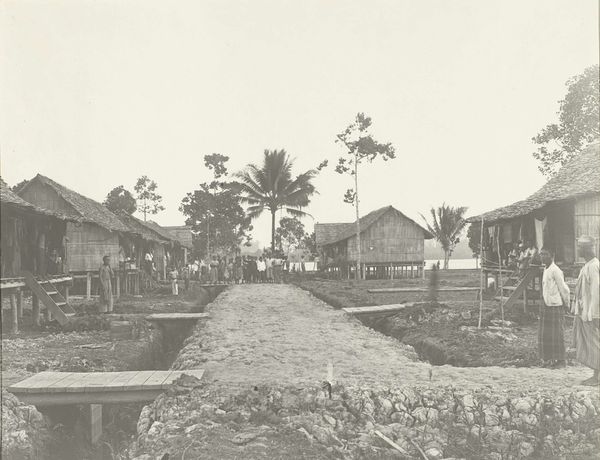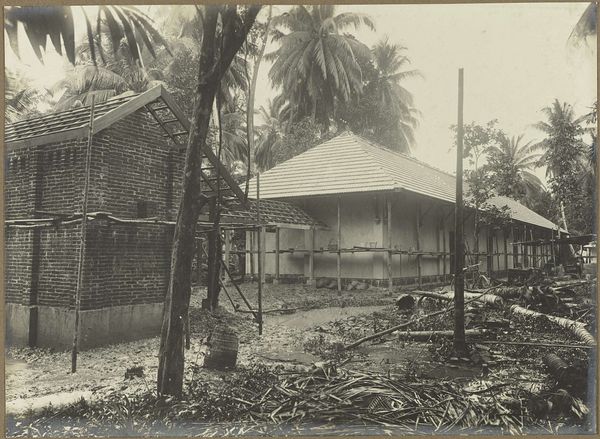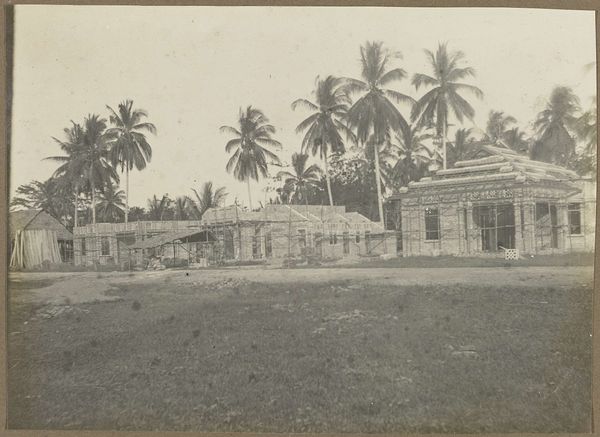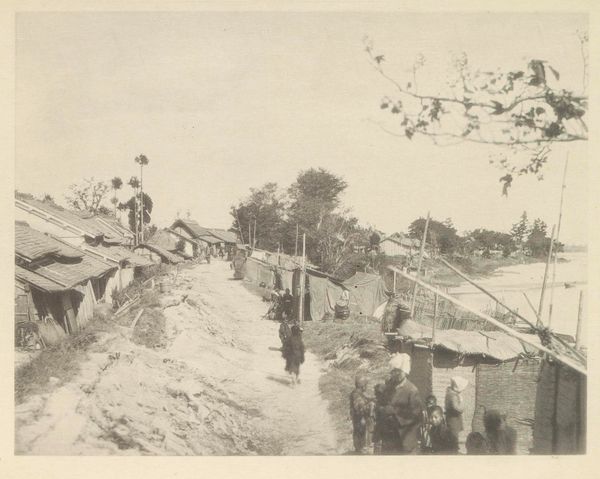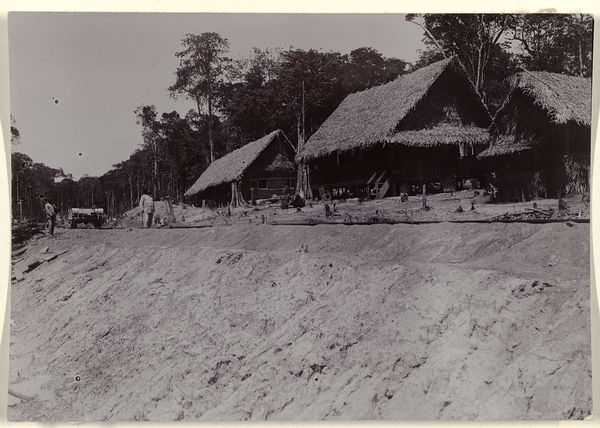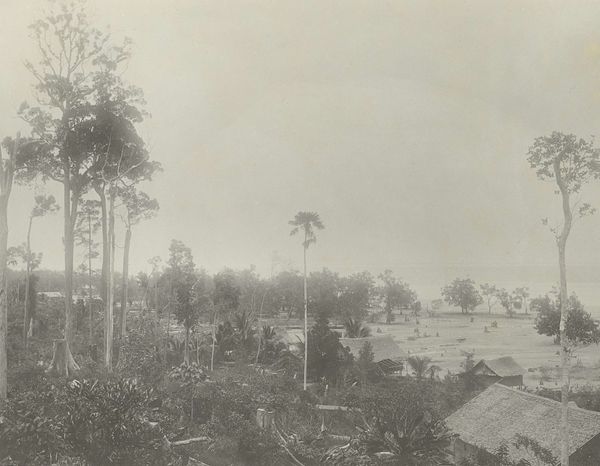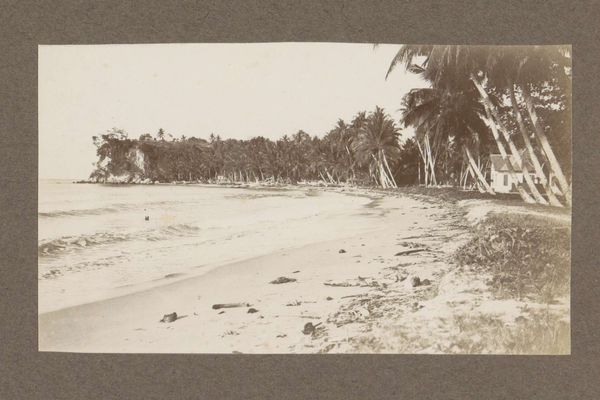
Dimensions: height 215 mm, width 280 mm, height 385 mm, width 440 mm
Copyright: Rijks Museum: Open Domain
Curator: This is an interesting black and white photograph titled "Huizen aan een weg," placing it somewhere between 1903 and 1907. The photographic print appears to be a gelatin silver print. Editor: It evokes a certain stillness. The light, the slightly hazy focus…there's a dreamlike quality to what appears to be a mundane roadside scene with modest homes. Curator: Gelatin silver prints were favored for their tonal range, their ability to capture sharp detail, but also allowing for artistic manipulation. There's a balance here between capturing a scene realistically, yet still imparting a specific mood. Those houses evoke images that were on postcards for a long period. Editor: True, but consider what's not in the frame as well as what is. Where are the people? Whose road is this? The almost flattened perspective lends it an unsettling aspect, perhaps a commentary on space and habitation during this colonial period, even an emptiness in that road ahead? Curator: Symbolically, roads have long represented journeys, opportunities, paths… in visual storytelling, it has strong associations of new chapters but also a crossroads in the viewers eye. The tropical imagery—the type of houses and flora depicted—place it within a very specific cultural context, hinting to more than what it presents to the eye at first sight. The contrast in shades adds weight to some cultural elements. Editor: Exactly, there's that inherent power imbalance in these images captured in places that might've been battlefields. While the photograph does offer us a window into a place and time, we must confront who gets to narrate this story and on whose terms, since there could have been native residents that could not claim that road and their narrative might never be acknowledged. It seems a landscape of imposed structures and silent implications, where a seemingly benign roadside hints at much larger political and social dynamics, an old wound yet to heal. Curator: Yes, seeing the deeper layers embedded in an artwork is like uncovering hidden symbols in old cultural stories and beliefs; once we know, they shed new light on a seemingly familiar image. Editor: Absolutely, and remembering that every picture is, in effect, a piece of activism: whether a defiant shout or a somber whisper.
Comments
No comments
Be the first to comment and join the conversation on the ultimate creative platform.
